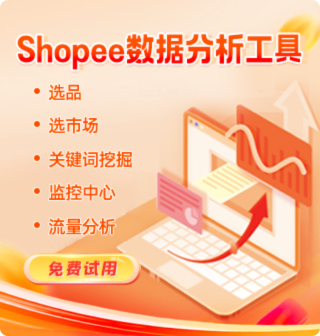-
用户185****2073
Shopee China: Exploring Shopee’s Role and Opportunities in the Chinese E-commerce Landscape
Shopee, a leading e-commerce platform in Southeast Asia and beyond, is widely recognized for its mobile-first, localized marketplace model. However, when it comes to China—the world’s largest and most competitive e-commerce market—Shopee’s presence and strategy present a unique case worth examining. This article explores Shopee’s relationship with China, its positioning in the Chinese digital commerce ecosystem, and practical insights for businesses leveraging Shopee’s cross-border opportunities linked to China.
1. The Context: China’s E-commerce Market
China boasts the world’s largest e-commerce market, with revenues surpassing trillions of US dollars annually. Dominated by giants like Alibaba (Taobao, Tmall) and JD.com, the market is highly mature, technologically sophisticated, and fiercely competitive. Strong domestic players combined with a savvy consumer base shaped by innovations such as live streaming commerce, social shopping, and integrated payment systems make China a complex environment for foreign platforms.
2. Shopee’s Direct Presence in China
Unlike its operations in Southeast Asia, Shopee does not operate a direct consumer-facing marketplace within mainland China. The platform has not launched a dedicated Shopee China app or website for the Chinese domestic audience. Instead, Shopee’s business strategy involves leveraging China as a key manufacturing and sourcing hub to supply products to its major markets in Southeast Asia, Taiwan, and beyond.
This means:
Many Shopee sellers are Chinese manufacturers, wholesalers, or exporters who use the platform to reach international consumers.
Shopee facilitates cross-border e-commerce, helping sellers in China connect with buyers in regions where Shopee operates.
The platform supports logistics, payment, and customs clearance to streamline shipments from China to Southeast Asia.
3. Cross-Border E-commerce and Shopee China Sellers
Shopee’s cross-border model is a critical component of its supply chain, especially regarding Chinese sellers. Some important facts and tips include:
Chinese Sellers’ Dominance: Due to cost efficiency and product variety, Chinese sellers form a significant portion of Shopee’s seller base. They compete fiercely in categories like electronics, fashion accessories, home goods, and beauty products.
Compliance and Verification: Shopee has implemented stringent seller verification processes to maintain trust and reduce counterfeit risks originating from cross-border sellers.
Localized Marketing: Chinese sellers often collaborate with local influencers or adapt their product listings for target markets to improve relevance.
Language and Customer Service: Successful sellers invest in multilingual support and market-specific after-sales service to enhance buyer experience.
Inventory Management: Some Chinese sellers opt for “Fulfillment by Shopee” (FBS) warehouses in Southeast Asia to reduce delivery times and customs complexities.
4. Challenges for Shopee-related China Sellers
Customs and Regulations: Cross-border shipments from China to other countries face customs delays, tariffs, and regulatory hurdles which sellers must navigate carefully.
Quality Control: Products shipped from China sometimes face scrutiny over quality and authenticity, making brand reputation management crucial.
Competition: Chinese sellers on Shopee compete with each other and local sellers, requiring differentiation via pricing, product quality, or customer engagement.
Logistics Costs: International shipping costs can erode margins if not optimized.
5. Shopee’s Role in Driving China-Origin Products Overseas
Shopee acts as a bridge enabling Chinese manufacturers to expand their global footprint, offering:
Market Access: Shopee provides Chinese SMEs with access to millions of buyers in fast-growing Southeast Asian markets, India, and Latin America.
Tech and Data Insights: Sellers benefit from Shopee’s data analytics tools to understand demand trends and optimize product offerings.
Promotional Campaigns: Shopee runs cross-border campaigns highlighting Chinese-made products, increasing visibility.
Integration with Chinese Supply Chains: Shopee collaborates with logistics partners and suppliers in China to streamline order fulfillment.
6. Practical Advice for Sellers in China Using Shopee
Understand Each Market’s Preferences: Customize product listings to local tastes, currencies, and languages.
Prioritize Fast and Reliable Shipping: Use Shopee’s fulfillment centers or trusted courier partners to ensure prompt delivery.
Maintain Transparency: Clearly communicate shipping times, return policies, and product details to reduce disputes.
Leverage Shopee Tools: Use Seller Center features for marketing, inventory management, and customer analytics.
Stay Updated on Regulations: Keep abreast of import/export laws, taxes, and customs requirements in target markets.
7. The Future Outlook
Shopee’s relationship with China will likely deepen through enhanced cross-border trade facilitation rather than domestic competition. Potential developments include:
More localized seller support in China: Training, workshops, and resources to help Chinese SMEs succeed on Shopee.
Better logistics integration: Advanced warehousing and shipping solutions to reduce delivery times and costs.
Technology innovation: AI-driven demand forecasting and personalized marketing tailored for cross-border commerce.
Collaboration with Chinese platforms: Strategic partnerships to integrate product sourcing and streamline payments.
Conclusion
Shopee China is less about operating an independent marketplace in China and more about serving as a critical gateway for Chinese manufacturers and sellers to reach growing consumer markets overseas. Through cross-border e-commerce, Shopee empowers Chinese businesses to expand internationally with relatively low barriers and localized support. At the same time, Shopee buyers enjoy access to diverse, affordable products from China, supported by a platform designed for convenience and trust.
For Chinese sellers and manufacturers, understanding Shopee’s ecosystem, market nuances, and operational best practices is essential to capitalize on the platform’s vast growth potential. As Shopee continues to evolve, its role as a connector between China’s production prowess and global consumption demand is set to become even more influential in shaping the future of e-commerce.

